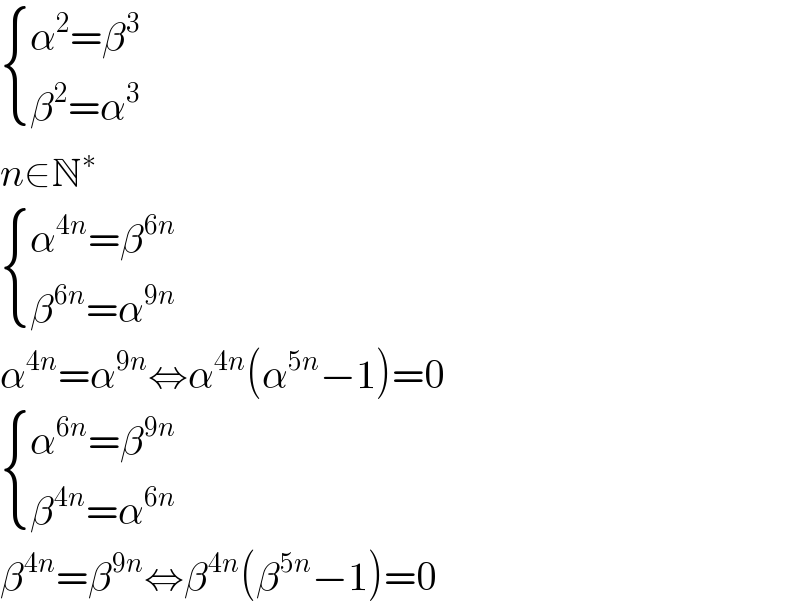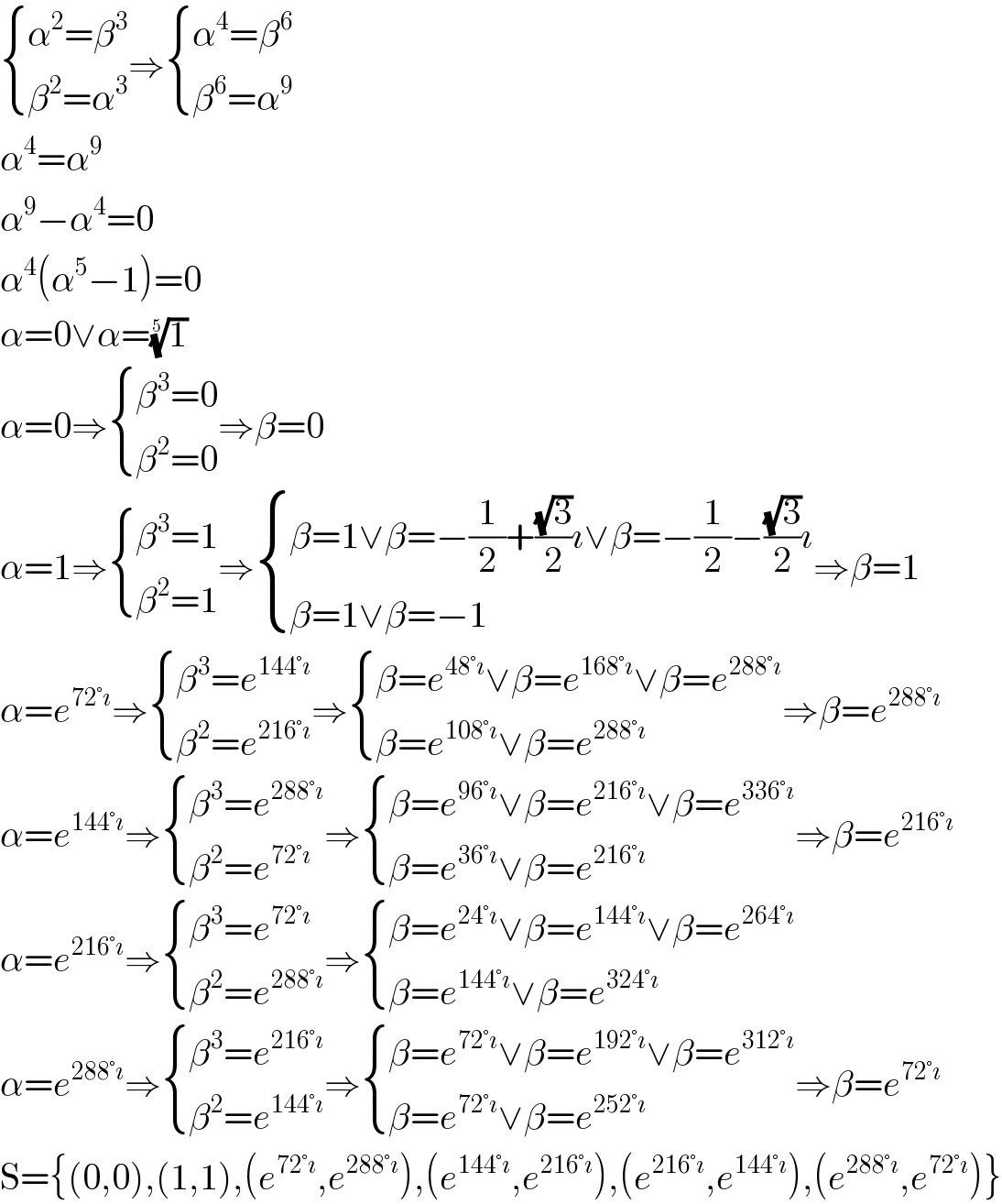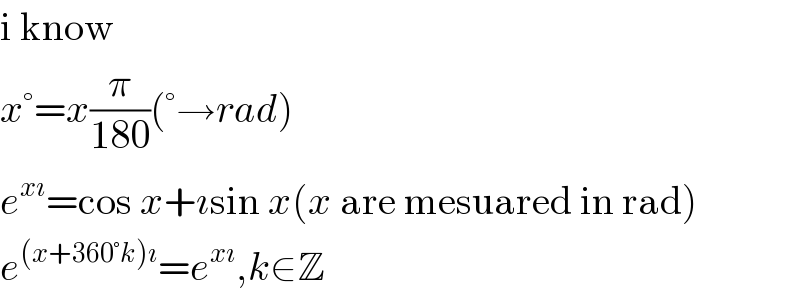Question Number 1497 by Rasheed Soomro last updated on 14/Aug/15

Commented by 123456 last updated on 14/Aug/15

Commented by Rasheed Ahmad last updated on 14/Aug/15

Commented by 123456 last updated on 15/Aug/15

Commented by Rasheed Soomro last updated on 16/Aug/15
![α^2 =β^3 (α^2 )^2 =(β^( 3) )^2 α^4 =(β^( 2) )^3 α^4 =(α^3 )^3 [substituting β^( 2) =α^3 ] α^4 =α^9 Assuming α≠0,dividing by α^4 α^5 =1⇒α=^5 (√1) Similarily , β^( 5) =1⇒β=^5 (√1) ∴ α and β both are 5th roots of unity. We know that nth root of unity=(cos((2π)/n)+ı sin((2π)/n) )^k , k=0,1,2,...(n−1) 5th root of unity=(cos((2π)/5)+ı sin((2π)/5) )^k , k=0,1,2,...4 Let cos((2π)/5)+ı sin((2π)/5) =ω 5th root of unity=1,ω,ω^2 ,ω^3 ,ω^4 (in order) Square of ∽ =1,ω^2 ,ω^4 ,ω,ω^3 (in order) Cube of ∽ =1,w^3 ,ω,ω^4 ,ω^2 (in order) (𝛚^k_1 )^2 = (𝛚^k_2 )^3 k_1 , k_2 = 0,1,2,3,4 𝛚^(2k_1 (mod 5)) =𝛚^(3k_2 (mod 5)) For 2k_1 (mod 5)=3k_2 (mod 5) : (α,β)=(ω^k_1 , ω^k_2 )=(ω^k_2 , ω^k_1 ) (α,β)={(1,1),(ω,ω^4 ),(ω^4 ,ω),(ω^2 ,ω^3 ),(ω^3 ,ω^2 )}](https://www.tinkutara.com/question/Q1517.png)
Commented by 123456 last updated on 15/Aug/15

Commented by Rasheed Soomro last updated on 16/Aug/15

Answered by 123456 last updated on 15/Aug/15

Commented by Rasheed Ahmad last updated on 15/Aug/15

Commented by 123456 last updated on 15/Aug/15

